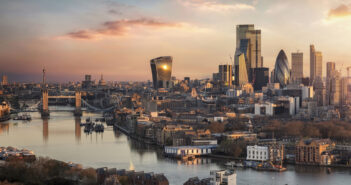How can we change the way we create and manage the built environment to reduce carbon emissions and match user expectations?
Cycling is hardly new technology, yet it is trailed repeatedly as a simple but dramatic change that matches modern values about healthy living while also reducing fuel consumption and air pollution.
The increase in the number of people choosing to cycle to and from work over the past decade has produced shifts in public policy and substantial public investment into cycle lanes in many towns and cities around Europe. However, all too often, the commercial properties that we work in have not kept up with the pace of change and the majority are lacking even basic cycling facilities.
Remit Consulting undertook research on behalf of the British Council for Offices into the impact of cycling on the workplace, the provision of cycling facilities within office buildings and the attitude of users, tenants and occupiers.
“Our research revealed that facilities offered for cyclists by many workplaces are often inadequate,” said Andrew Waller of Remit Consulting.
“The survey showed that 16% of office workers surveyed consider that poor facilities discourage them from considering commuting by bicycle. Almost two-fifths of the office workers we surveyed said that they would consider commuting to work by bike if their workplace had better or more facilities, demonstrating a clear need for UK businesses to cater to cyclists.”
Waller continued: “If the property sector is serious about its green credentials, active travel and the environmental impact buildings have, then it has to give greater consideration to the facilities for cyclists.”
The research identified a range in quality of the soft services provided to building users.
“There is a huge opportunity for FM service providers to step in and make buildings more hospitable to active users – not just cyclists but runners and walkers too,” said Remit Consulting’s Neil Webster.
“There are some good examples of bicycle maintenance provided within a building and mobile/on call services. Honor Cycles and Von Crank are just two disruptors in this evolving marketplace,” he added.
“We are also seeing an increase in the cycling components appearing in some of the community-based applications like Equiem, helping to connect cyclists within a building or a large-scale development.”
Remit Consulting’s research also revealed:
- 83% of workplaces in the UK offer some form of bike storage, only 47% is covered and secure
- 45% of offices do not have showers – something which almost 24% of those surveyed said would encourage them to consider commuting by bike
Following the publication of the BCO report, Remit Consulting organised “ReTour”, a cycling tour by property professionals of some of the best examples of office cycling facilities in central London, visiting a number of exemplary developments across central London with a view to identifying the ‘best in class’ facilities offered to cyclists as occupiers.
A wide range of bicycles was used to allow participants to assess the best features of each property from the perspective of a wide range of commuters/cyclists. Points considered and discussed included:
- Ease of access
- Security issues
- Provision of showers/changing facilities
- Availability of lockers/personal storage
- Use of technology
Remit Consulting’s “ReTour” event is being repeated in 2019 and will take place in London on 19 June. Let’s leave cyclists on the ground and take to the air for a different perspective that can have a beneficial impact on monitoring the climate crisis in property.
Charlie Knox, director of environmental and sustainability services at UK independent building and project consultancy Paragon, said: “Technology has a key role to play in enabling sustainability and one less-explored area is the integration of drone technology into environmental investigations.
“An innovative approach we have adopted sees us use drone data and mapping to support site condition and environmental permitting exercises. We are using drone surveys captured in-house by our head of drone services, Elliott Garrett, to give developers more certainty and clarity over their environmental and sustainability risks. Put simply, drones allow for greater coverage and perspective than manual investigation alone, which is essential when trying to build up a holistic ground model.”
Knox added: “To support clients’ applications for pollution prevention and control permits, we are able to conduct site condition surveys assisted by drone technology. Topographical surveys, contour plots and photogrammetry assessments mean it is possible to assess potential flow routes for leaks and spills and create technical CAD plans that can be submitted alongside the application.
“We have also seen landlords afflicted by airborne biological contaminants, such as black residual staining to the outside of their property. Here, drones can be deployed to take an aerial survey of the local area and identify potential sources. Combined with specialist services like biological testing, investigators can now call upon a broader range of tools to achieve the best outcome.
In future, we anticipate many more applications for drone technology which can boost our environmental services. On brownfield regeneration sites, using this method to measure volumes of stockpiles through 3D models and elevation maps means monitoring waste and re-use volumes can be completed faster and more accurately than traditional ground-based volumetrics.
We can also deploy drones for flyovers of very large or hard-to-reach sites. Invasive species such as Giant Hogweed make sites difficult and unsafe to survey on foot but they can be easily assessed through drone imagery. Contour and topographical mapping can also help understand site levels and locations of water courses for Flood Risk Assessments and we have also explored using the drone to assist drainage surveys by locating manholes across very large sites.”
“This all serves to improve client service by providing richer data, safer, faster and at a lower cost.”
Inside buildings, the prevalence of sensors in driving efficiency through space use is not just about the best layout of desks, but also reducing energy waste. If sensors tell you a room is empty but the heating is left on for 12 hours a day you can see that and take action, turn off the radiators and save energy.
One such supplier that does works in this field and is proud to adopt the World Economic Forum’s goals on sustainability through the Internet of Things is Hark.
Jordan Appleson, CEO of Hark, said: “Hark’s cloud-based platform enables companies to simplify the route to intelligent assets to increase efficiency while reducing waste. We monitor, store and analyse sensor data in real-time – data that can be used to ensure and promote healthy lives through resilient, inclusive and sustainable infrastructure.”
A lot more can and must be done to save the planet from overheating beyond the tipping point of no return. At least now we are seeing companies making a start today.
The conversation continues at MIPIM PropTech Europe 2019.



